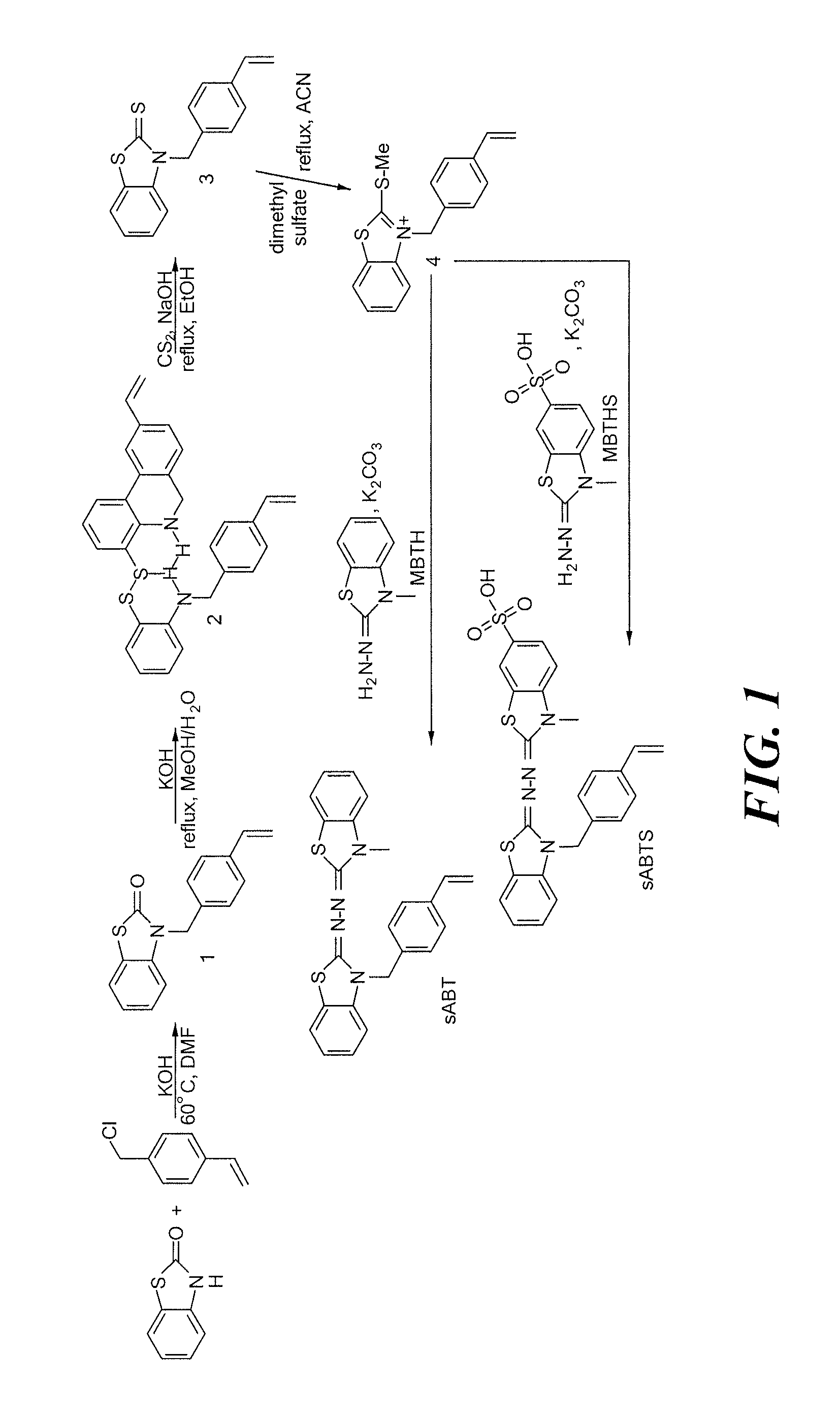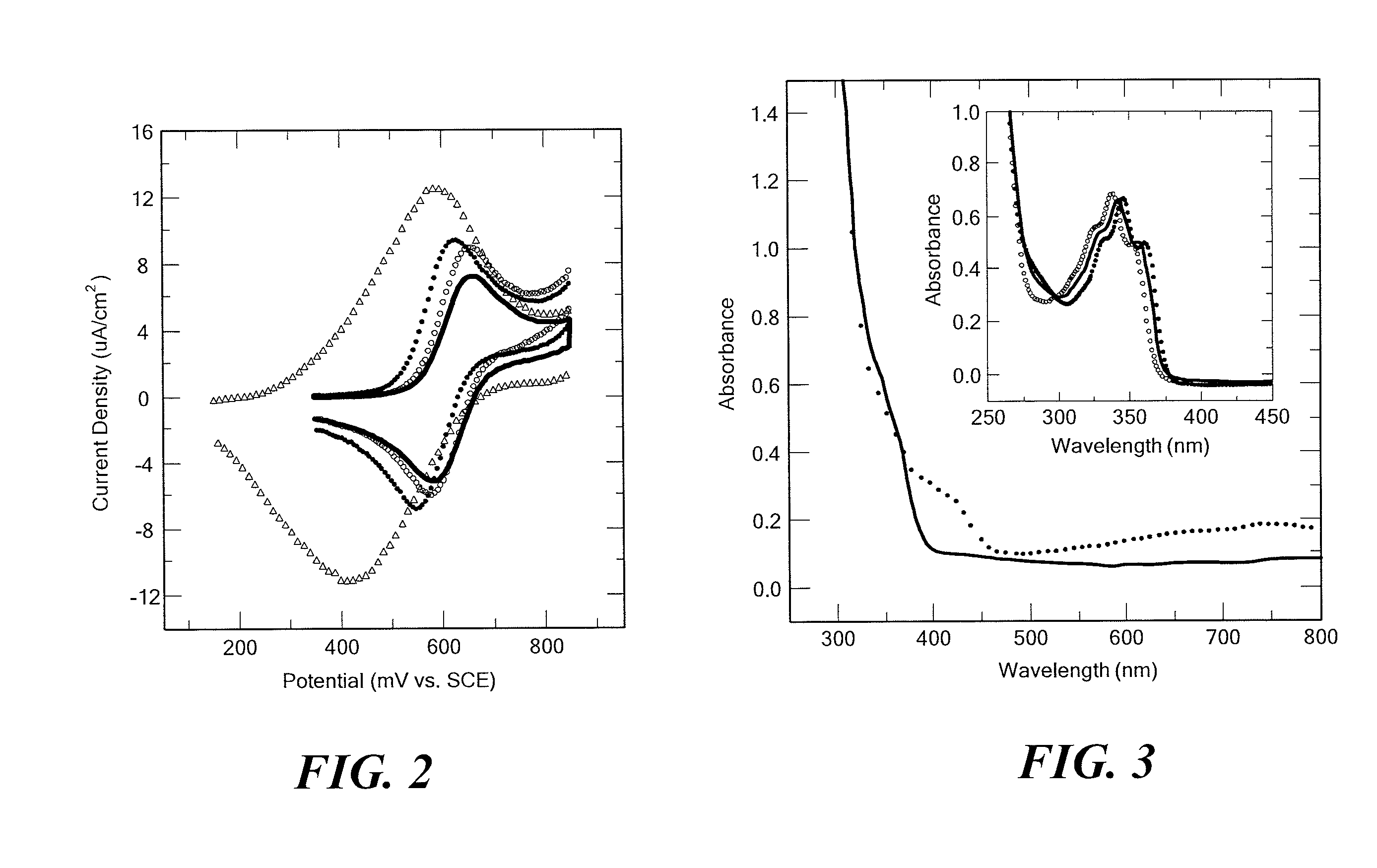Redox-active polymers and their applications
a technology of redox-active polymers and polymers, applied in the direction of non-metal conductors, cell components, conductors, etc., can solve the problems of loss of redox and chromogenic properties of composites, and achieve the effect of increasing current flow and energy, and increasing potentials
- Summary
- Abstract
- Description
- Claims
- Application Information
AI Technical Summary
Benefits of technology
Problems solved by technology
Method used
Image
Examples
Embodiment Construction
[0039]In one aspect, the invention provides redox-active monomers of ABTS and its derivatives capable of polymerizing into a redox-active polymer. Preferably, monomers of the invention include N-(3-Methyl-3H-benzothiazol-2-ylidene)-N′-[3-(4-vinyl-benzyl)-3H-benzothiazol-2-ylidene]-hydrazine (sABT) and 3-Methyl-2-{[3-(4-vinyls-benzyl)-3H-benzothiazol-2-ylidene]-hydrazonol}-2,3-dihydro-benzothiazole-6-sulfonic acid (sABTS). These monomers are also referred to as polymerizable derivatives of ABTS.
[0040]The examples herein are provided to illustrate advantages of the invention, including those that have not been previously described, and to further assist a person of ordinary skill in the art with using the monomers, polymers, co-polymers and devices of the invention. The examples can include or incorporate any of the variations or inventive embodiments as described herein. The embodiments that are described herein also can each include or incorporate the variations of any or all other ...
PUM
| Property | Measurement | Unit |
|---|---|---|
| yield | aaaaa | aaaaa |
| yield | aaaaa | aaaaa |
| diameter | aaaaa | aaaaa |
Abstract
Description
Claims
Application Information
 Login to View More
Login to View More - R&D
- Intellectual Property
- Life Sciences
- Materials
- Tech Scout
- Unparalleled Data Quality
- Higher Quality Content
- 60% Fewer Hallucinations
Browse by: Latest US Patents, China's latest patents, Technical Efficacy Thesaurus, Application Domain, Technology Topic, Popular Technical Reports.
© 2025 PatSnap. All rights reserved.Legal|Privacy policy|Modern Slavery Act Transparency Statement|Sitemap|About US| Contact US: help@patsnap.com



